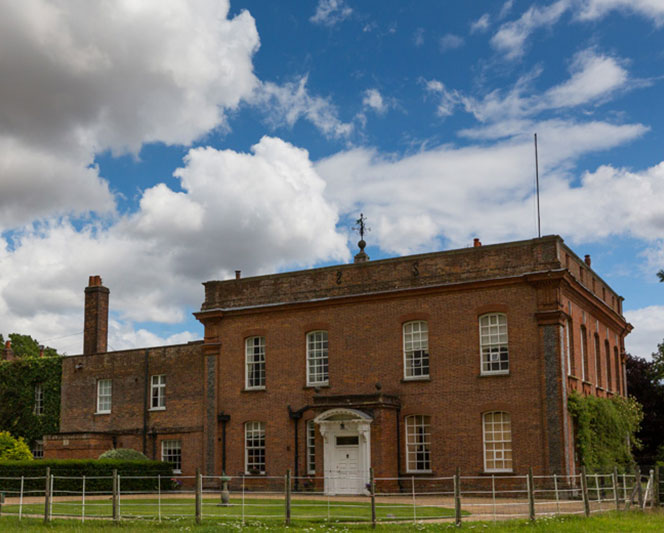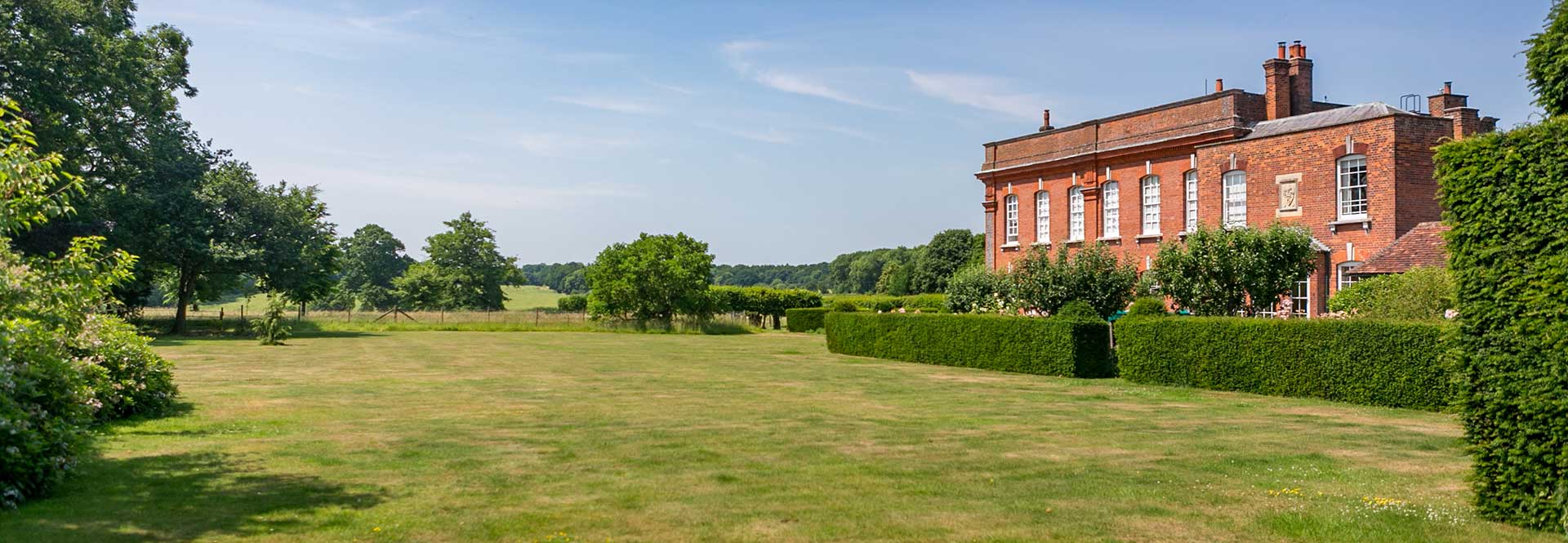Farming
Whilst it is a fairly mundane topic, it is difficult to write this without spending some time talking about the weather! Thankfully, as I write this spring appears to have sprung, or at least there are intermittent days of sunshine between the seemingly endless rain.
As always, it has been a busy time for preparing ground for planting the spring-sown crops, although this year, the fickle weather has meant that there have been very short windows to get work done. This has been especially challenging where the ground has been saturated over the winter. For example a break in the weather would allow some ground to be prepared for planting, but then before planting could happen there would be another downpour, taking everything back almost to square one. The volume and intensity of the rain has meant that preparation work has been essential to get air into the soil, as even where we have grown cover crops over the winter, the amount of water in the soil would make it either impossible to plant, or greatly increase the risk of crop failure.
Anyway, these frustrations aside, it is lovely to see the hedgerows coming out, the daffodils in full bloom and the bluebells now out in the woods.
Our conventional winter wheat has received its first doses of fertiliser, and aside from some waterlogged patches, generally looks in reasonable shape. There is some disease present, but the plants are largely healthy. It continues to remain noticeable that the wheat following the diverse cover crop that was sown last summer has stronger plants than that which followed the oilseed rape. Topography will play a part in this, as the flat fields along Gaddesden Row have sat wet all winter, but still it is no coincidence that the resting, the diversity, and the soil conditioning brought about by the cover crop have led to a stronger stand of wheat. Integrating this into viable crop rotations over the longer term is difficult however, but something we continue to explore.
The oilseed rape to the East of red lion lane is now fully in flower. It is always something of a relief when it gets to this stage as, for the most part, it means that the crop has got past the stage of being eaten by every bit of wildlife for whom it seems to be something of a delicacy. This has had all of its fertiliser, and just needs one spray to protect from viral disease before harvesting at the end of July.
The Wildfarmed wheat and bean bi-crop behind the Old Chequers as rather perked up since I last wrote. Of the 37 hectares (91 acres) that we planted, I had initially written off all of it, but in the end decided to keep about 17 ha, on the basis that whilst not great, it would probably be better than any spring crop we would manage to plant. The failed area is now planted with barley for malting and making beer, and so I’ll be able to have a direct comparison to see which one does best.
This barley is also to be grown for Wildfarmed, to be made into their craft beer called “Regenerator”. Again, like the wheat, it will be “companion cropped”, that is to say grown with another crop in the same field. The inclination is for this to be linseed because of its excellent soil conditioning properties. There is a risk, however, that when it comes to harvest, unripe linseed in the bottom of the crop will tangle up the combine and make harvest very difficult. If I knew it would be a baking hot summer I wouldn’t be concerned, but right now it feels like something of a gamble. Worse case scenario would be if the barley fell over, or “lodged”, and then flat barley was mixed with un-ripe linseed, the stems of which are extremely tough, being what ropes were made of in the past. Any planting of the linseed will be imminent, so I will have more of an update the next month, by which time I will have made up my mind.
Our organic crop this spring is oats, and these have had a shaky start – some looks good, but we have had to re-drill some parts because of not achieving good enough weed control before planting. As with the conventional ground, the soil has needed conditioning before planting, with the added pressure of killing the weeds that of course we cannot spray. As I write we have about 10ha (25 acres) left to plant, but hope to do this in the next few days.
Estate Management
We are planning some tree works in Big Wood for later in the summer. This is largely to address roadside trees, in particular Ash trees which are suffering from Ash Dieback. As the disease takes hold these trees may pose a risk to the road, and it is therefore important that they are dealt with. All felling will be followed by re-planting of new trees next winter. Some of the felling work will require a managed road closure of Red Lion Lane, and more details of this will be available in due course, once all the required permits are in place.
GFJH
Whilst it is a fairly mundane topic, it is difficult to write this without spending some time talking about the weather! Thankfully, as I write this spring appears to have sprung, or at least there are intermittent days of sunshine between the seemingly endless rain.
As always, it has been a busy time for preparing ground for planting the spring-sown crops, although this year, the fickle weather has meant that there have been very short windows to get work done. This has been especially challenging where the ground has been saturated over the winter. For example a break in the weather would allow some ground to be prepared for planting, but then before planting could happen there would be another downpour, taking everything back almost to square one. The volume and intensity of the rain has meant that preparation work has been essential to get air into the soil, as even where we have grown cover crops over the winter, the amount of water in the soil would make it either impossible to plant, or greatly increase the risk of crop failure.
Anyway, these frustrations aside, it is lovely to see the hedgerows coming out, the daffodils in full bloom and the bluebells now out in the woods.
Our conventional winter wheat has received its first doses of fertiliser, and aside from some waterlogged patches, generally looks in reasonable shape. There is some disease present, but the plants are largely healthy. It continues to remain noticeable that the wheat following the diverse cover crop that was sown last summer has stronger plants than that which followed the oilseed rape. Topography will play a part in this, as the flat fields along Gaddesden Row have sat wet all winter, but still it is no coincidence that the resting, the diversity, and the soil conditioning brought about by the cover crop have led to a stronger stand of wheat. Integrating this into viable crop rotations over the longer term is difficult however, but something we continue to explore.
The oilseed rape to the East of red lion lane is now fully in flower. It is always something of a relief when it gets to this stage as, for the most part, it means that the crop has got past the stage of being eaten by every bit of wildlife for whom it seems to be something of a delicacy. This has had all of its fertiliser, and just needs one spray to protect from viral disease before harvesting at the end of July.
The Wildfarmed wheat and bean bi-crop behind the Old Chequers as rather perked up since I last wrote. Of the 37 hectares (91 acres) that we planted, I had initially written off all of it, but in the end decided to keep about 17 ha, on the basis that whilst not great, it would probably be better than any spring crop we would manage to plant. The failed area is now planted with barley for malting and making beer, and so I’ll be able to have a direct comparison to see which one does best.
This barley is also to be grown for Wildfarmed, to be made into their craft beer called “Regenerator”. Again, like the wheat, it will be “companion cropped”, that is to say grown with another crop in the same field. The inclination is for this to be linseed because of its excellent soil conditioning properties. There is a risk, however, that when it comes to harvest, unripe linseed in the bottom of the crop will tangle up the combine and make harvest very difficult. If I knew it would be a baking hot summer I wouldn’t be concerned, but right now it feels like something of a gamble. Worse case scenario would be if the barley fell over, or “lodged”, and then flat barley was mixed with un-ripe linseed, the stems of which are extremely tough, being what ropes were made of in the past. Any planting of the linseed will be imminent, so I will have more of an update the next month, by which time I will have made up my mind.
Our organic crop this spring is oats, and these have had a shaky start – some looks good, but we have had to re-drill some parts because of not achieving good enough weed control before planting. As with the conventional ground, the soil has needed conditioning before planting, with the added pressure of killing the weeds that of course we cannot spray. As I write we have about 10ha (25 acres) left to plant, but hope to do this in the next few days.
Estate Management
We are planning some tree works in Big Wood for later in the summer. This is largely to address roadside trees, in particular Ash trees which are suffering from Ash Dieback. As the disease takes hold these trees may pose a risk to the road, and it is therefore important that they are dealt with. All felling will be followed by re-planting of new trees next winter. Some of the felling work will require a managed road closure of Red Lion Lane, and more details of this will be available in due course, once all the required permits are in place.
GFJH


